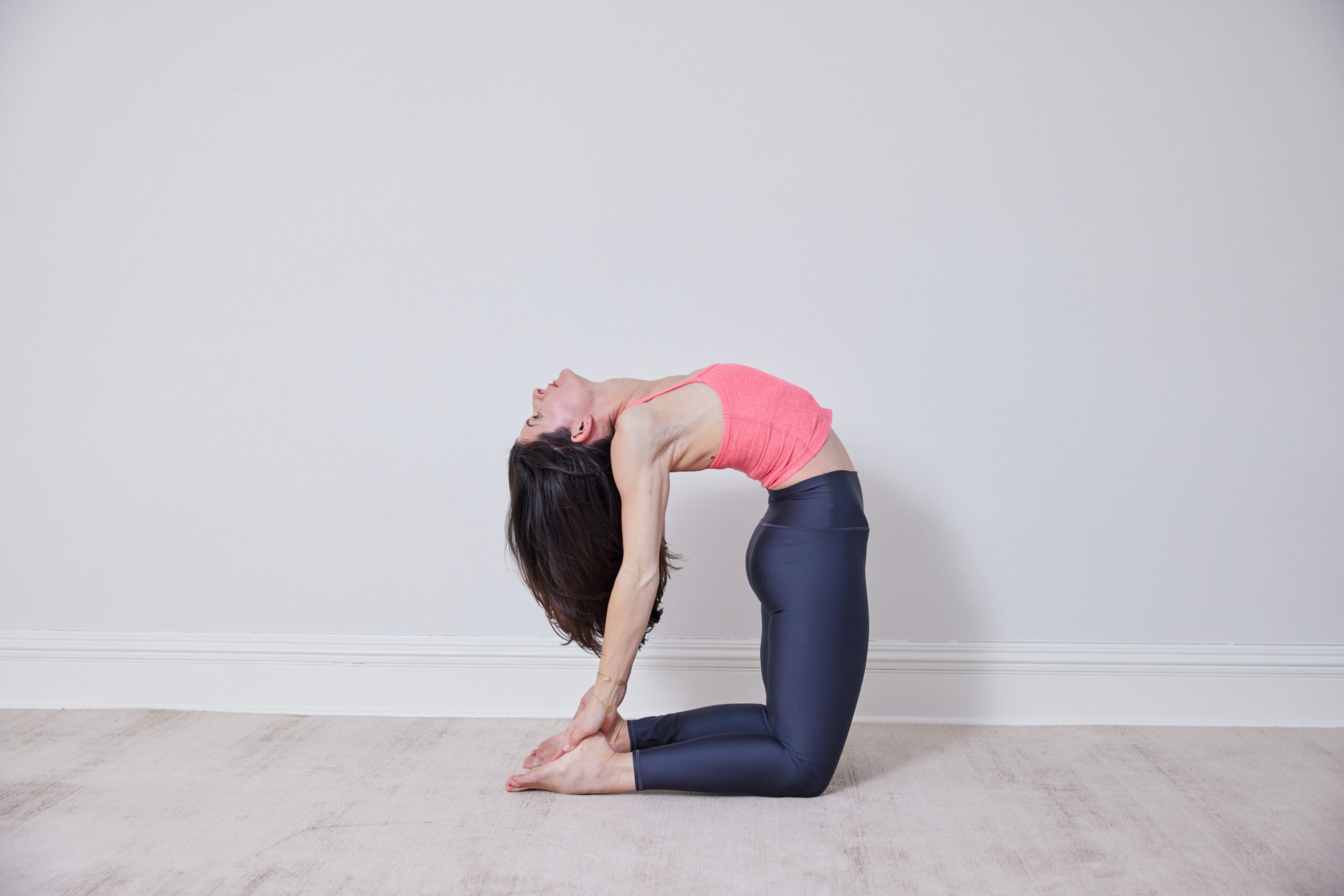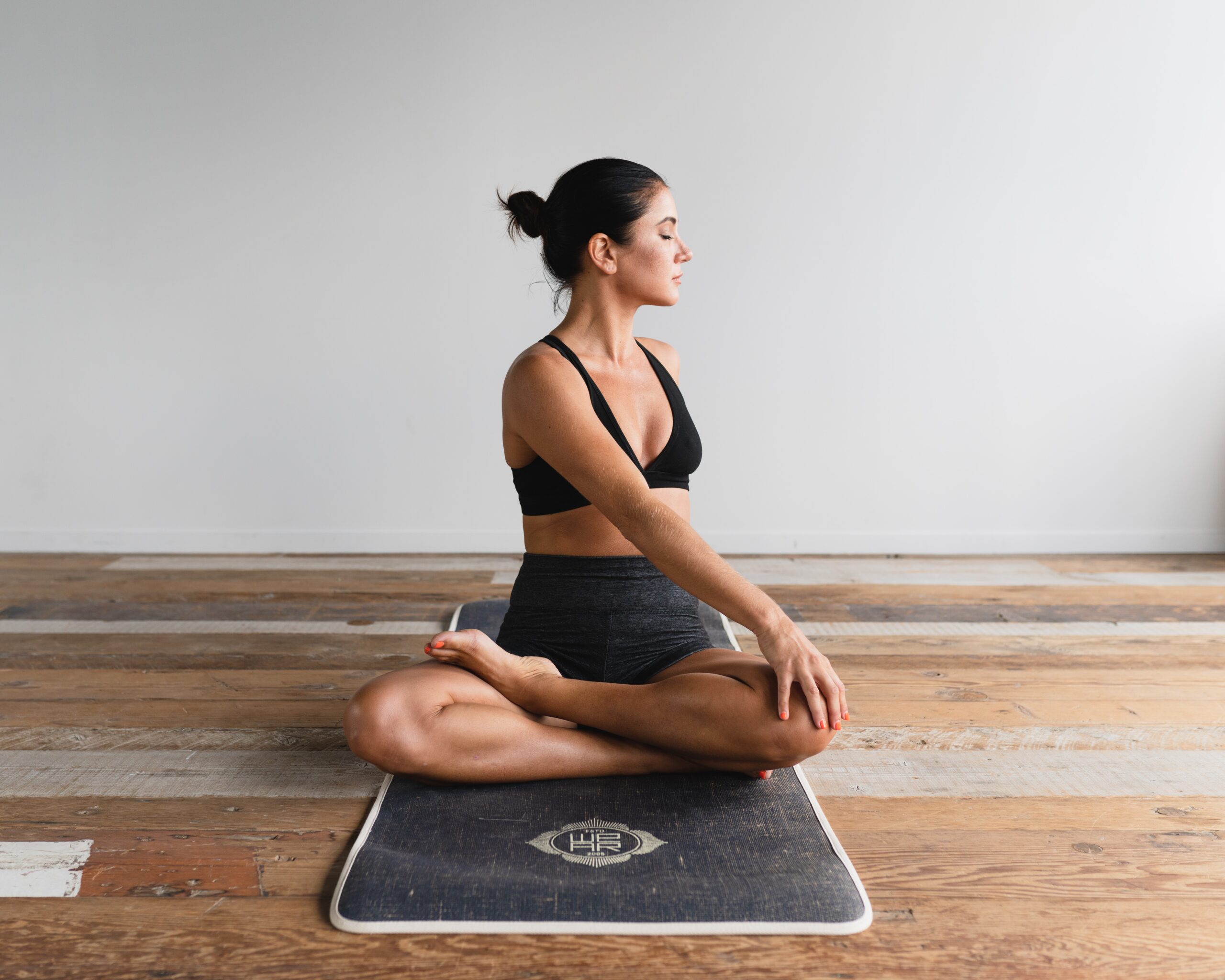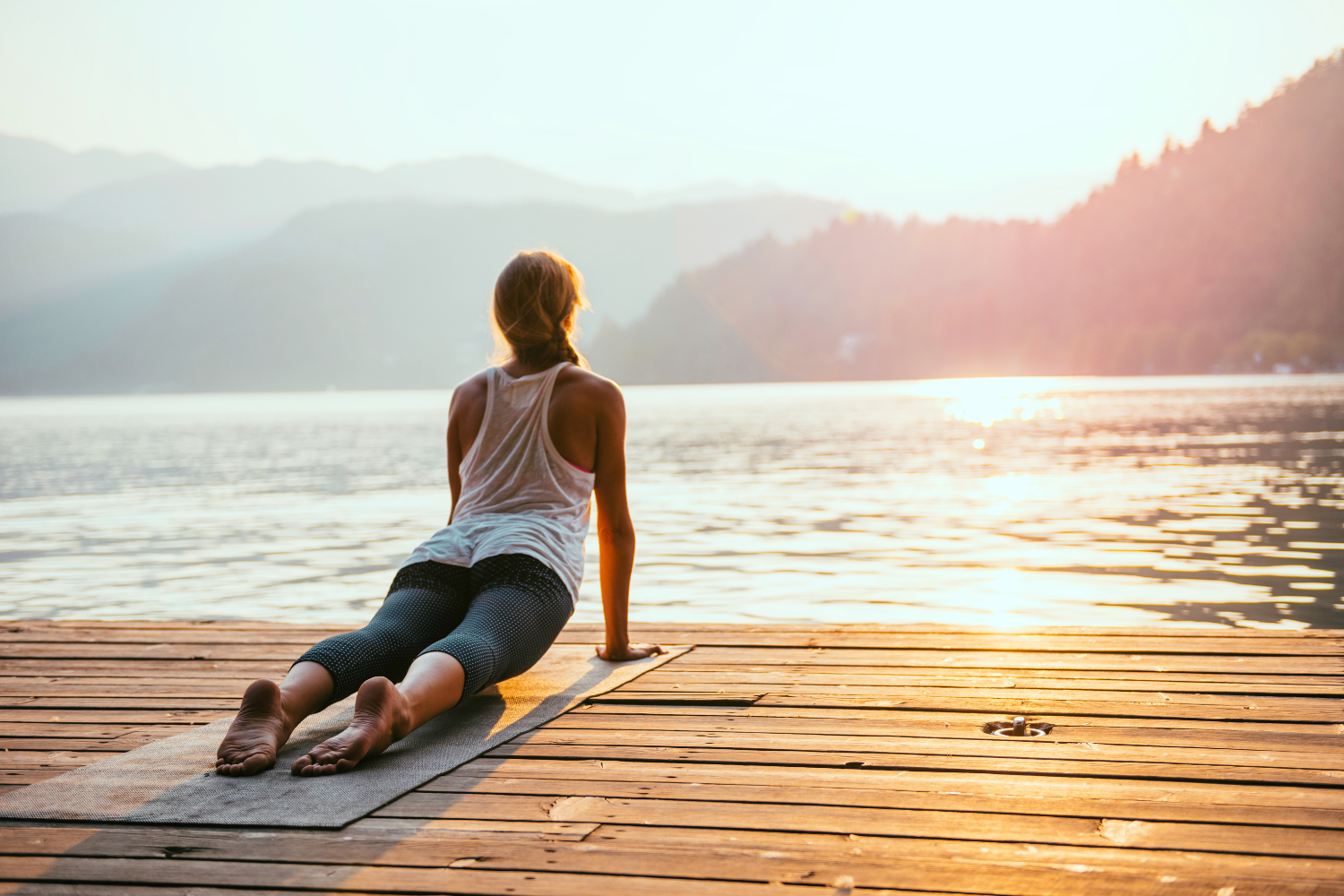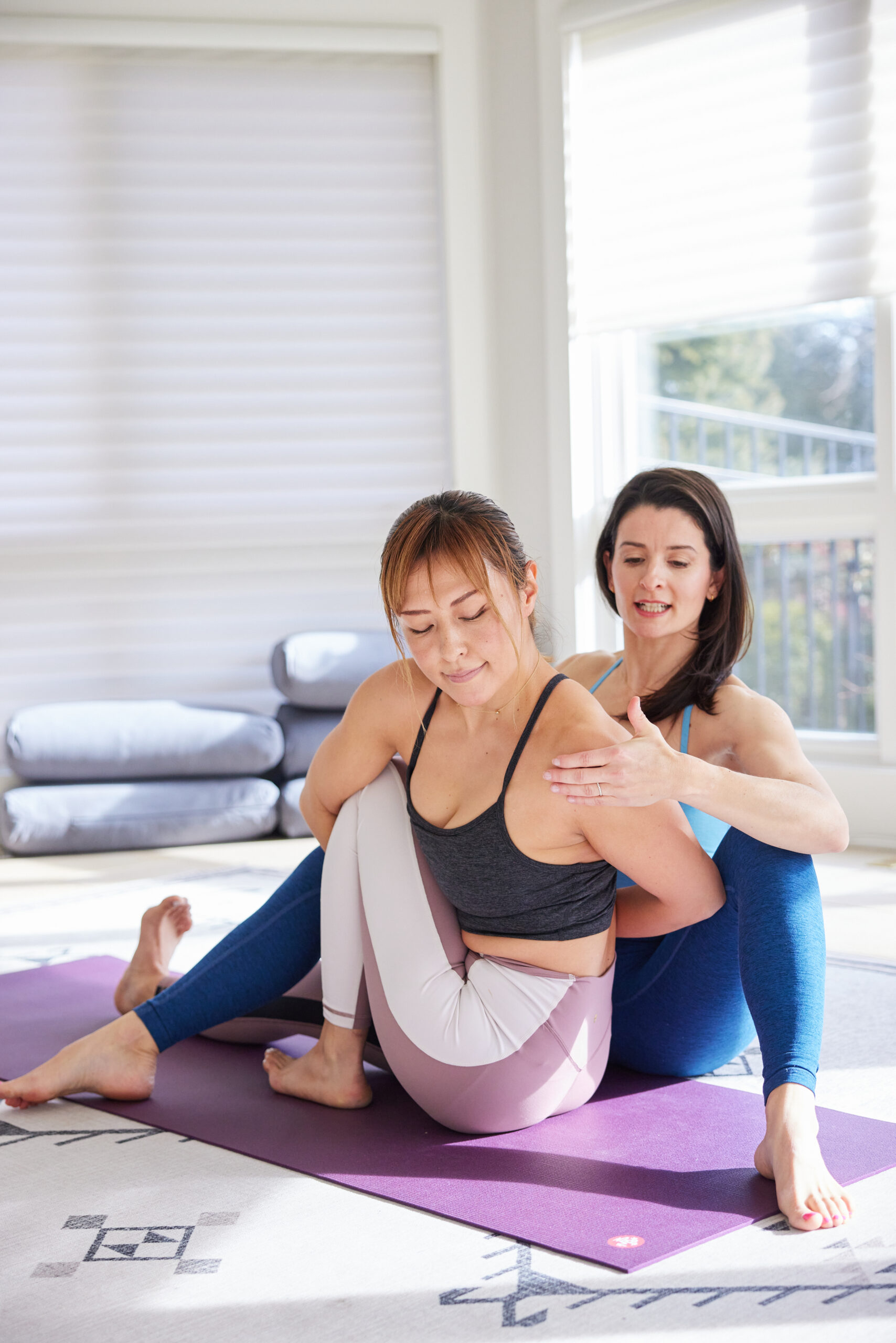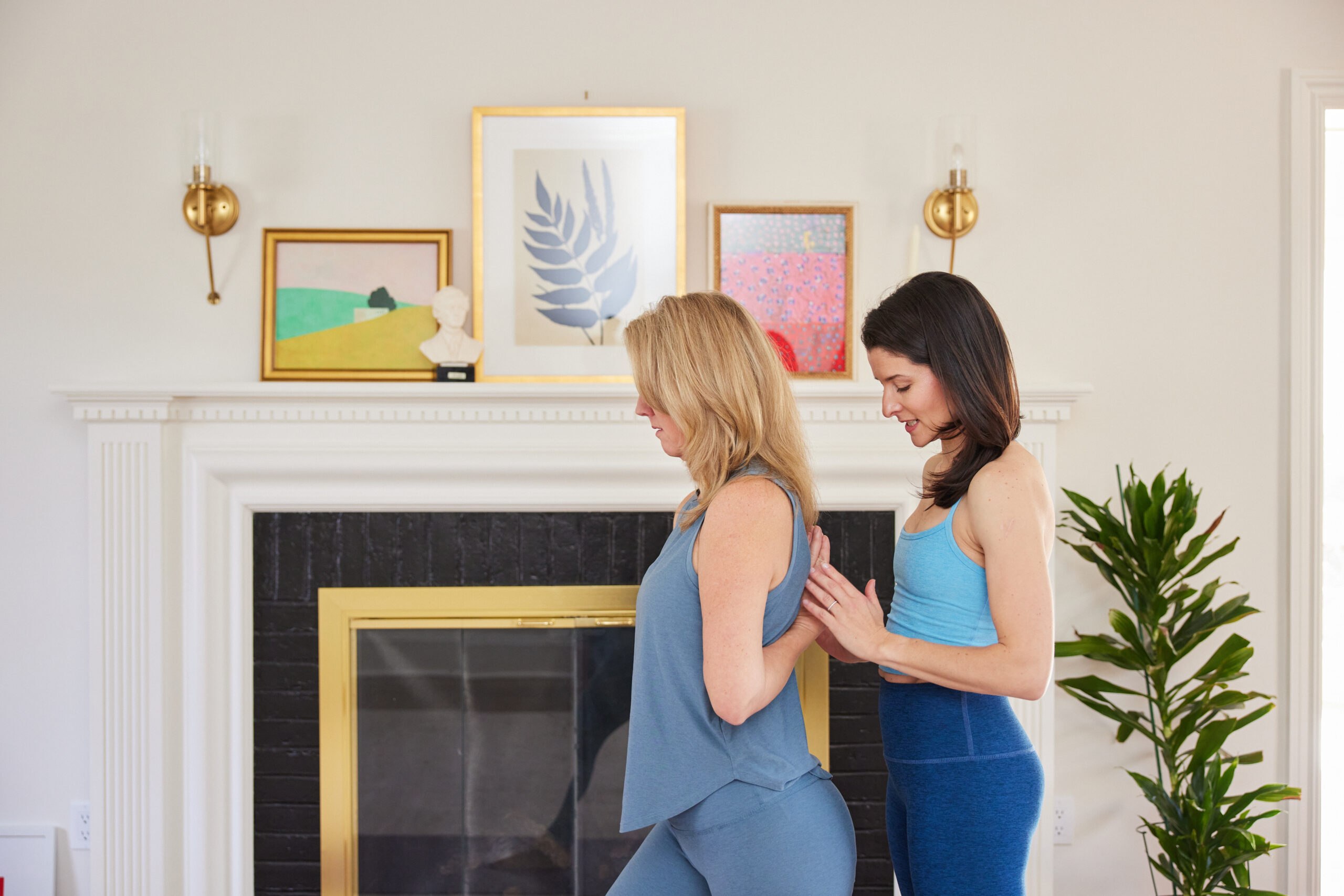What is Vinyasa Yoga?
Vinyasa yoga is typically what you see when you walk by a yoga studio and take a peek inside. It is a style many learn as their introduction to yoga due to its accessibility, versatility, and artful approach.
Threading breath to movement, Vinyasa Yoga also known as “flow yoga” invites movement into the body in a mindful and creative way that links one pose to the next like a moving meditation.
Depending on the instructor, a Vinyasa yoga class can range from sweaty and heart-pumping to gentle and meditative.
In this article, we will cover:
- The origin of Vinyasa yoga
- Exploring Vinyasa yoga as a beginner
- What to expect in your first Vinyasa yoga class
- Is Vinyasa yoga for you?
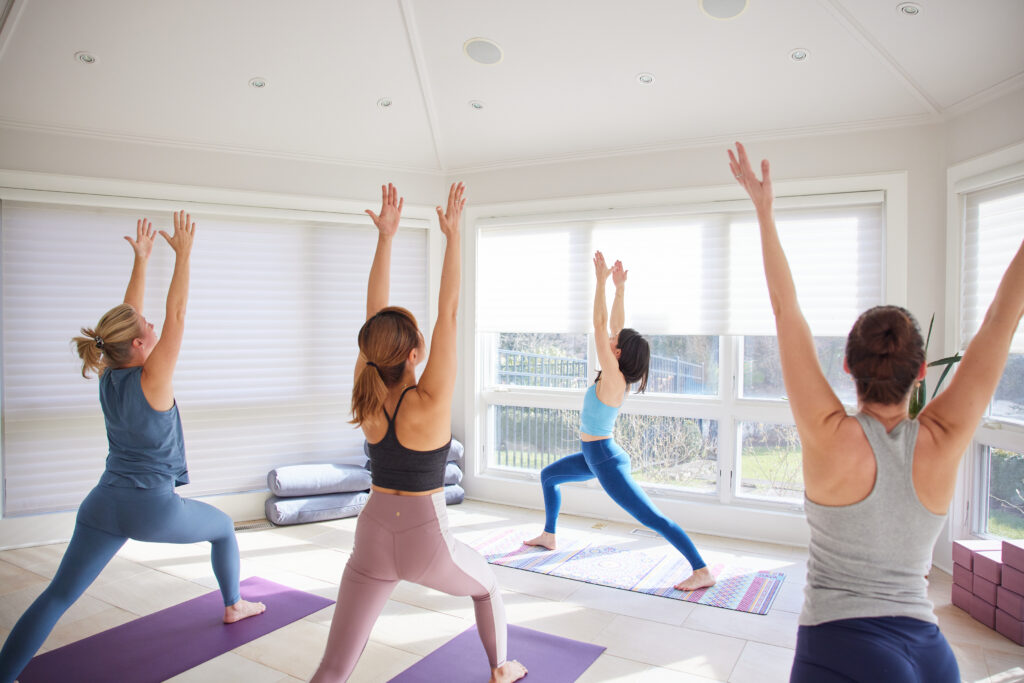
The origin of Vinyasa yoga
Vinyasa evolved from the teachings of a 20th-century yogi named Sri Krishnamacharya and his students, including K. Pattabhi Jois the founder of Ashtanga yoga. Although Krishnamacharya is often considered the “father of modern yoga”, no single person can be credited for what we know as Vinyasa yoga today.
The word “vinyasa” is derived from the Sanskrit term “nyasa,” which means “to place,” and “vi,” which means “in a special way.”- vinyasa can then mean, to place in a special way. This tells us that Vinyasa yoga is meant to be an intentional movement by its nature.
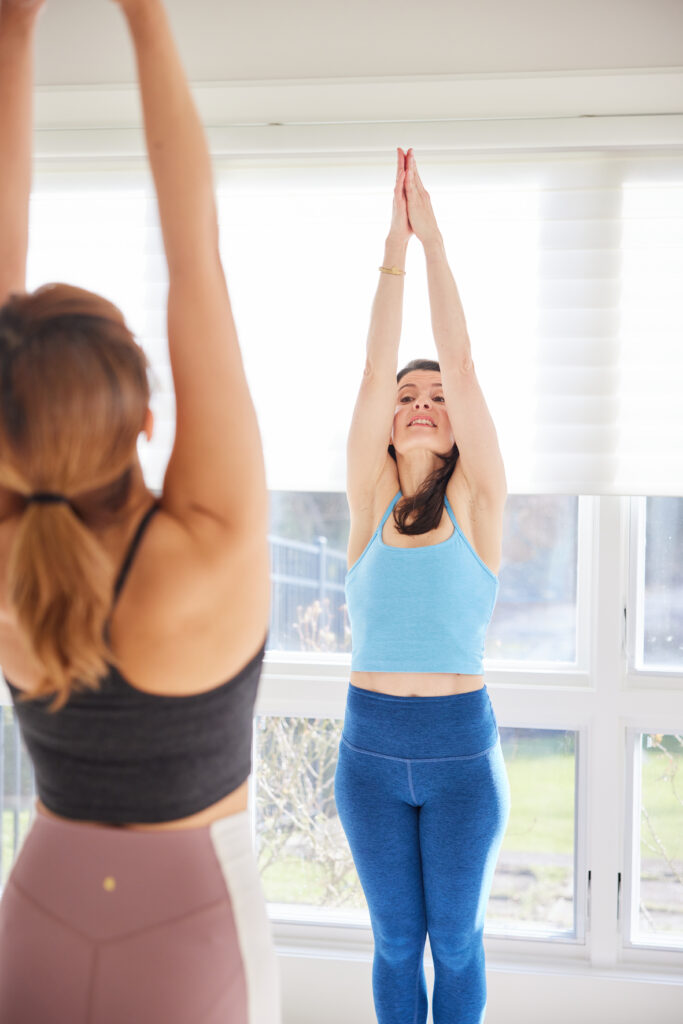
One of the tools that help us stay intentional while moving into the yoga poses is our breath.
In vinyasa yoga, we harmonize our breath with our body movements linking one breath to one movement. An example of this would be coming into a downward-facing dog on an inhale and down to a high yogi push-up on an exhale.
This creates what we call “vinyasa flow” where you find yourself naturally being guided by your breath with every inhale and exhale creating a rhythmic flow.
After a series of yoga poses, you will hear your teacher say “flow through your vinyasa” where you flow through a set sequence also known as a “vinyasa” that involves a series of poses before moving into the next set of poses. We’ll go over this sequence in the “What to expect in your first vinyasa yoga class” section a little further down.
Exploring Vinyasa yoga as a beginner
Vinyasa yoga classes tend to vary in theme and sequence.
Classes may be centered around a peak pose such as a backbend, or focus on a particular theme such as the chakras or an aspect of yoga philosophy- sometimes both.
Some classes may also incorporate music or chanting, adding an extra element of spiritual and cultural richness to the practice.
While vinyasa yoga is often associated with physical fitness, it also has a strong focus on breath, meditation, and mindfulness, making it a holistic practice that benefits both the body and the mind.
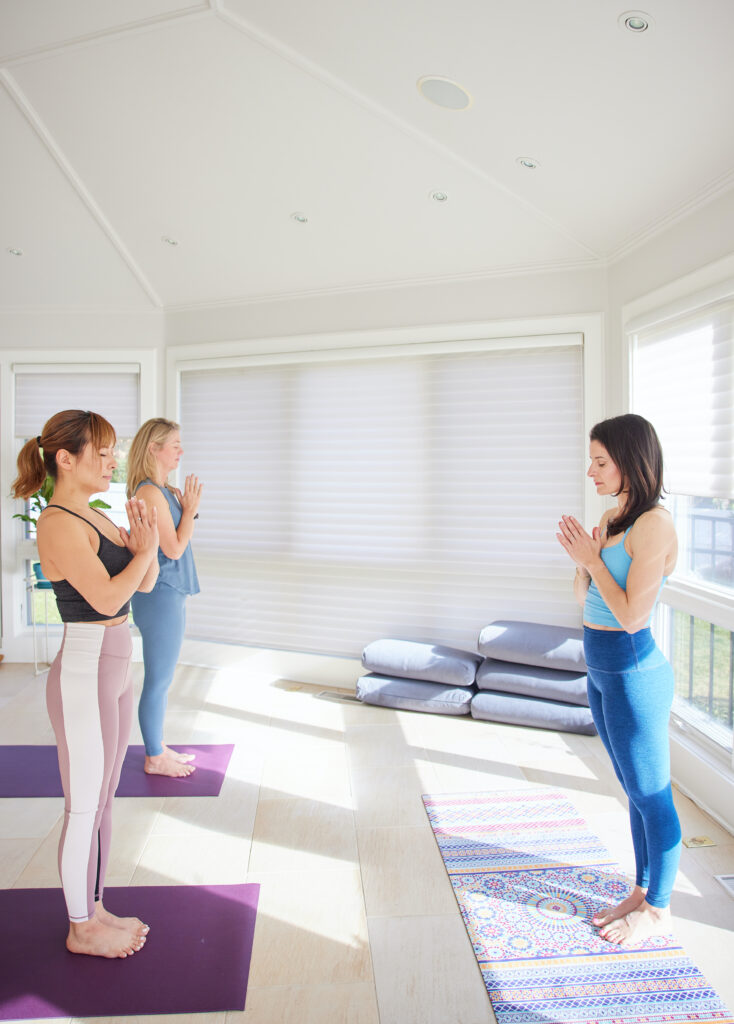
Mental and physical benefits of a vinyasa yoga practice include
- Improved strength and flexibility: Through the continuous flow of movement and breathing into fussy sensations that may arise, you create greater elasticity in the body’s muscles and joints while toning and strengthening them.
- Cardiovascular health: The constant movement in vinyasa yoga can help to improve blood flow circulation and increase physical endurance.
- Reduced stress and anxiety: The harmonization between your breath and movement promotes relaxation and a sense of calm in your nervous system.
- Increased connection with your inner and outer world.
What to expect in your first Vinyasa yoga class?
Your first vinyasa yoga class may be dynamic and focus on strengthening postures, or it may be a slower flow with an emphasis on mobility and flexibility in the spine or the hips- make sure to check the class description to plan accordingly.
One of the key aspects of Vinyasa yoga is the “vinyasa”. This word can be interpreted in many different ways but in the context of hearing it cued by your teacher this is a sequence of postures that includes:
- high plank to a low plank (also chaturanga dandasana or four-limbed staff pose)
- to an heart opener whether an upward-facing dog, a full cobra or a baby cobra
- to a downward-facing dog

This sequence helps to build strength in the upper body and core, as well as improve flexibility in the hips and hamstrings while improving overall spinal mobility.
Beginners should keep in mind, this part is always optional especially when learning proper alignment in the poses.
Is Vinyasa yoga right for you?

If you are looking to cultivate a better relationship with yourself, invite daily movement into your life, and lower stress levels, Vinyasa yoga might be right for you.
Contrary to popular belief that you need to be flexible to practice yoga, vinyasa yoga is a versatile practice that can be modified to suit all levels and abilities.
When starting a Vinyasa yoga practice it is highly recommended to practice under the supervision of a trained and experienced yoga instructor that can look at your body and provide hands-on adjustments as needed.
Beginners may start with a slower-paced class focusing on the basics, while more advanced practitioners can challenge themselves with faster-paced, more complex sequences.
Ideally, it can be a blend of the two where the student is challenged to find effort and ease in the poses.
Conclusion
There is no right or wrong style of yoga and some styles speak to us at different seasons of our lives. Vinyasa is an excellent beginner and advanced yoga style to practice that can tone and strengthen our body and mind.
Consider attending a small group class with Hélène Roy Yoga today to continue exploring your vinyasa practice with community and personalized care!
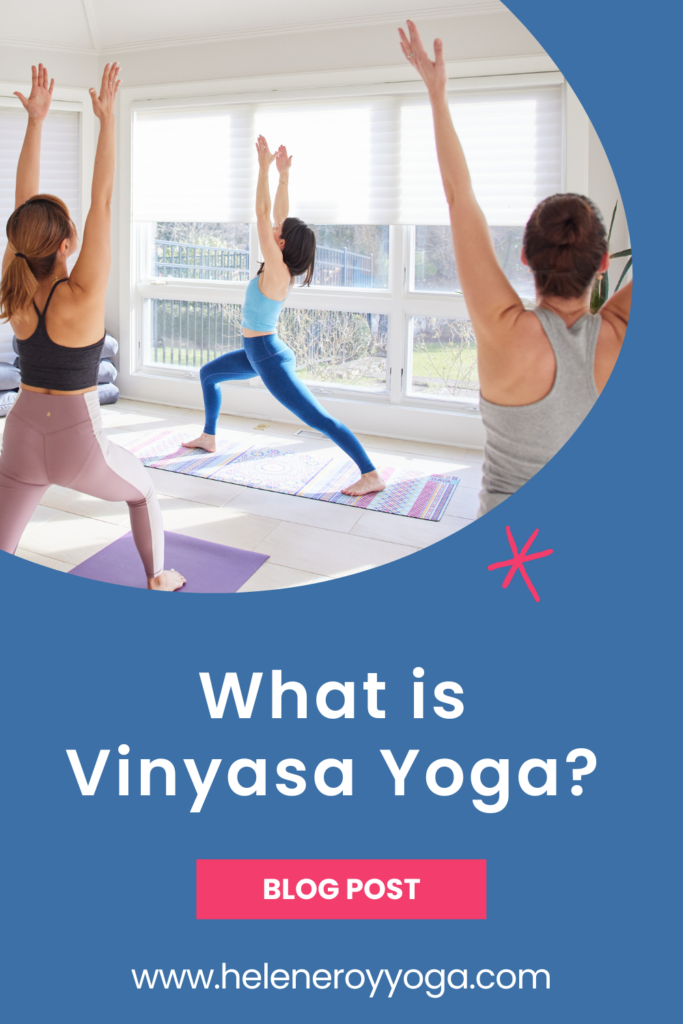
I understand what it's like to desire more out of life and look to yoga as a path to wellbeing. Your practice can awaken new perspectives as you tune in with your physical and emotional body.
When I started practicing, my finance career was at its height of success. I had the fancy job title but lacked fulfillment. I found the more I leaned into the yogic path, the more my whole life came into alignment.
I'm Hélène
Hey there!
more about me
FREE DOWNLOAD
Steal This
Get Your Ashtanga
Starter Kit
Practice With Me
group classes
private YOGA
WORKSHOPS
RETREATS
What is Ashtanga Yoga?
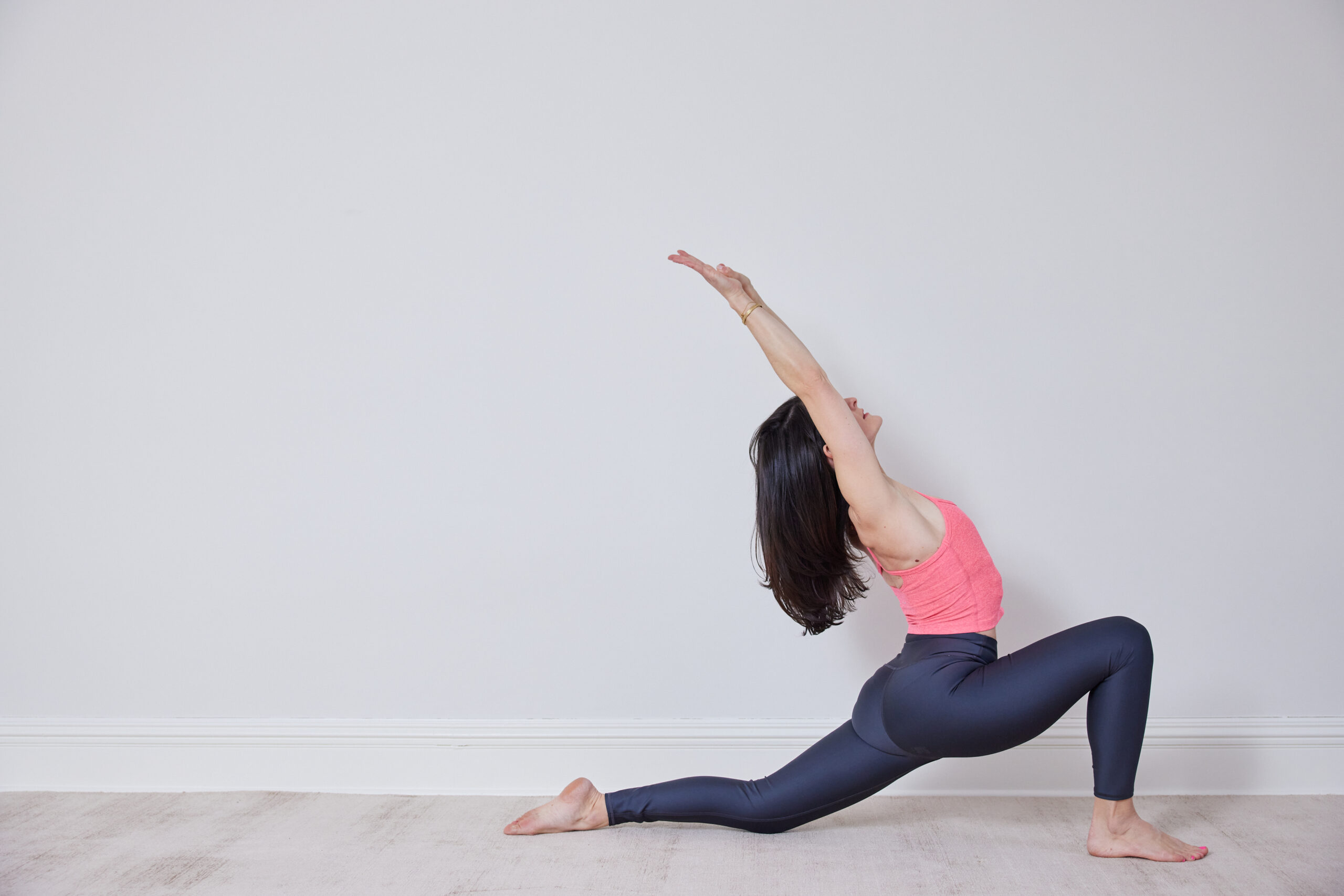
Vinyasa yoga is typically what you see when you walk by a yoga studio and take a peek inside. It is a style many learn as their introduction to yoga due to its accessibility, versatility, and artful approach.
Threading breath to movement, Vinyasa Yoga also known as “flow yoga” invites movement into the body in a mindful and creative way that links one pose to the next like a moving meditation.
Depending on the instructor, a Vinyasa yoga class can range from sweaty and heart-pumping to gentle and meditative.
In this article, we will cover:
- The origin of Vinyasa yoga
- Exploring Vinyasa yoga as a beginner
- What to expect in your first Vinyasa yoga class
- Is Vinyasa yoga for you?

The origin of Vinyasa yoga
Vinyasa evolved from the teachings of a 20th-century yogi named Sri Krishnamacharya and his students, including K. Pattabhi Jois the founder of Ashtanga yoga. Although Krishnamacharya is often considered the “father of modern yoga”, no single person can be credited for what we know as Vinyasa yoga today.
The word “vinyasa” is derived from the Sanskrit term “nyasa,” which means “to place,” and “vi,” which means “in a special way.”- vinyasa can then mean, to place in a special way. This tells us that Vinyasa yoga is meant to be an intentional movement by its nature.

One of the tools that help us stay intentional while moving into the yoga poses is our breath.
In vinyasa yoga, we harmonize our breath with our body movements linking one breath to one movement. An example of this would be coming into a downward-facing dog on an inhale and down to a high yogi push-up on an exhale.
This creates what we call “vinyasa flow” where you find yourself naturally being guided by your breath with every inhale and exhale creating a rhythmic flow.
After a series of yoga poses, you will hear your teacher say “flow through your vinyasa” where you flow through a set sequence also known as a “vinyasa” that involves a series of poses before moving into the next set of poses. We’ll go over this sequence in the “What to expect in your first vinyasa yoga class” section a little further down.
Exploring Vinyasa yoga as a beginner
Vinyasa yoga classes tend to vary in theme and sequence.
Classes may be centered around a peak pose such as a backbend, or focus on a particular theme such as the chakras or an aspect of yoga philosophy- sometimes both.
Some classes may also incorporate music or chanting, adding an extra element of spiritual and cultural richness to the practice.
While vinyasa yoga is often associated with physical fitness, it also has a strong focus on breath, meditation, and mindfulness, making it a holistic practice that benefits both the body and the mind.

Mental and physical benefits of a vinyasa yoga practice include
- Improved strength and flexibility: Through the continuous flow of movement and breathing into fussy sensations that may arise, you create greater elasticity in the body’s muscles and joints while toning and strengthening them.
- Cardiovascular health: The constant movement in vinyasa yoga can help to improve blood flow circulation and increase physical endurance.
- Reduced stress and anxiety: The harmonization between your breath and movement promotes relaxation and a sense of calm in your nervous system.
- Increased connection with your inner and outer world.
What to expect in your first Vinyasa yoga class?
Your first vinyasa yoga class may be dynamic and focus on strengthening postures, or it may be a slower flow with an emphasis on mobility and flexibility in the spine or the hips- make sure to check the class description to plan accordingly.
One of the key aspects of Vinyasa yoga is the “vinyasa”. This word can be interpreted in many different ways but in the context of hearing it cued by your teacher this is a sequence of postures that includes:
- high plank to a low plank (also chaturanga dandasana or four-limbed staff pose)
- to an heart opener whether an upward-facing dog, a full cobra or a baby cobra
- to a downward-facing dog

This sequence helps to build strength in the upper body and core, as well as improve flexibility in the hips and hamstrings while improving overall spinal mobility.
Beginners should keep in mind, this part is always optional especially when learning proper alignment in the poses.
Is Vinyasa yoga right for you?

If you are looking to cultivate a better relationship with yourself, invite daily movement into your life, and lower stress levels, Vinyasa yoga might be right for you.
Contrary to popular belief that you need to be flexible to practice yoga, vinyasa yoga is a versatile practice that can be modified to suit all levels and abilities.
When starting a Vinyasa yoga practice it is highly recommended to practice under the supervision of a trained and experienced yoga instructor that can look at your body and provide hands-on adjustments as needed.
Beginners may start with a slower-paced class focusing on the basics, while more advanced practitioners can challenge themselves with faster-paced, more complex sequences.
Ideally, it can be a blend of the two where the student is challenged to find effort and ease in the poses.
Conclusion
There is no right or wrong style of yoga and some styles speak to us at different seasons of our lives. Vinyasa is an excellent beginner and advanced yoga style to practice that can tone and strengthen our body and mind.
Consider attending a small group class with Hélène Roy Yoga today to continue exploring your vinyasa practice with community and personalized care!

